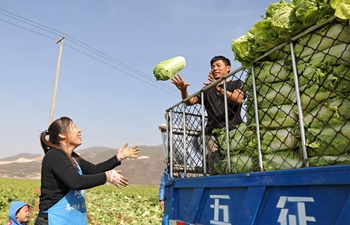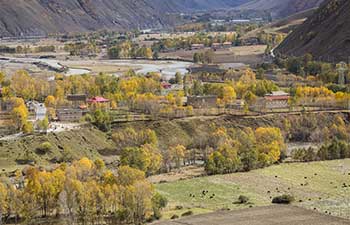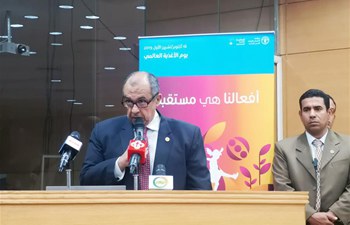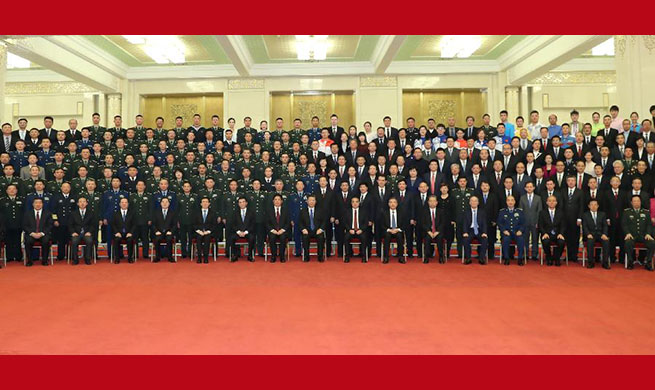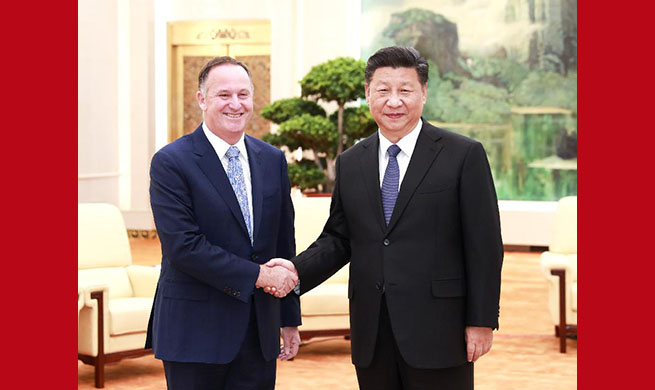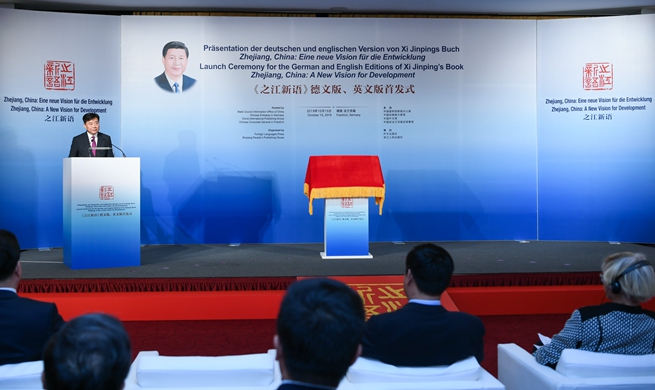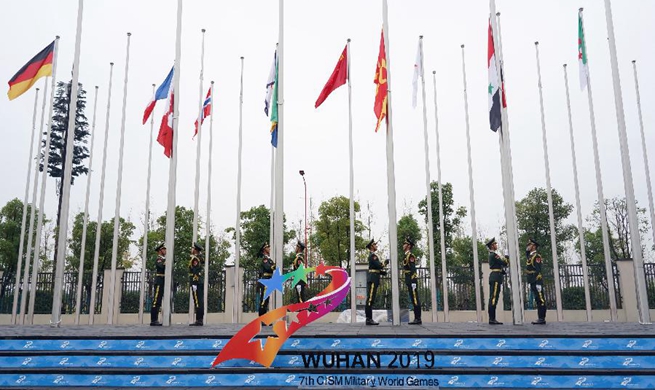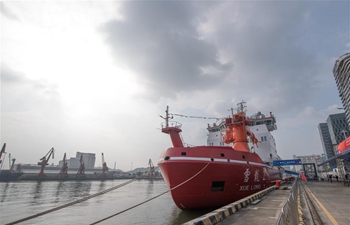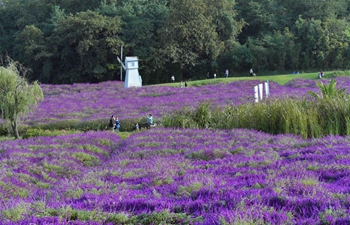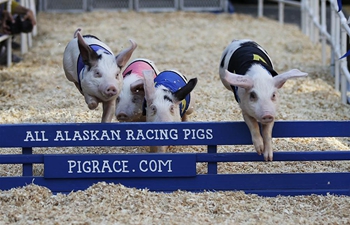HOHHOT, Oct. 17 (Xinhua) -- There used to be sparse vegetation on the eroding grassland in Temur's hometown, a large prairie in north China's Inner Mongolia Autonomous Region, even in the summertime.
"The rangeland of the family was much smaller a dozen years ago, but there were twice as many sheep to graze as now. Overgrazing deteriorated the grassland degradation," said the 60-year-old herdsman who lives in Altanhil of East Ujimqin Banner, Xilingol.
People in Altanhil at that time could hardly find large tracts of grassland with tall grass that grew over knee height, even with gravel outcropping in some places, Temur recalled.
Natural grasslands cover 74 percent of Inner Mongolia's land area and more than one-fifth of China's total, yet a large space of the prairies has long suffered from grassland deterioration, land desertification and raging sandstorms.
"Grasslands have dual functions, both productive and ecological," said Liang Cunzhu, professor at the School of Ecology and Environment of Inner Mongolia University.
According to Liang, it was the lack of awareness about the function of grassland as an ecological barrier that brought about overgrazing, thus broke eco-balance.
Thanks to a series of proposals put forward by the China Democratic League (CDL), a non-Communist political party in the country, the prairie along China's border with Mongolia has restored a forage-livestock balance.
The idea came from years of field surveys and research work by the members of the CDL Inner Mongolia Autonomous Regional Committee since 2003, with overgrazing identified as the root of the ecological problems.
Dong Hengyu, head of the CDL Inner Mongolia Autonomous Regional Committee, submitted two proposals to the second session of the 11th National Committee of the Chinese People's Political Consultative Conference (CPPCC), the country's top political advisory body, held in March 2009.
The proposals, which called for efforts to strengthen grassland protection and conservation, and to build a long-term mechanism for grassland ecological compensation, received considerable attention and were listed as key proposals by the CPPCC National Committee.
In October 2010, the State Council decided to establish a mechanism that would provide subsidies and rewards for ecological protection and conservation in pasturing areas. The policy came into effect one year later in eight major pasturing provinces and regions, including Inner Mongolia, Xinjiang and Tibet.
The coverage of subsidies extended to 268 county-level pasturing areas across the country in 2012, and herders were compensated for letting their grasslands go fallow.
To avoid relapse and improve the policy, the CDL Inner Mongolia Autonomous Regional Committee carried out in-depth investigations in 2014 and suggested a long-term policy and a rise in subsidy standards.
A new round of incentive policy was introduced in 2016, with 18.8 billion yuan (about 2.68 billion U.S. dollars) in subsidies granted by the Chinese government annually.
Temur now grazes nearly a thousand sheep on his 1,700 hectares of grassland. Although the number of livestock is only one-fifth of what he used to have, his annual income is not affected by the decrease in livestock as he is entitled to get a 45-yuan subsidy per hectare a year for his sacrifice.
"The herders are the beneficiaries too, as we have more flowers and grass on the grassland now, and fewer sandstorms," he said, noting that nature is the greatest treasure of herders.
The vegetation coverage rate in Inner Mongolia reached 44 percent in 2018, a 14 percent increase from 2000, according to the regional bureau of forestry and grassland. A total of 68 million hectares of grassland in the region has achieved forage-livestock balance, with grazing banned for a month every spring.
The CDL Inner Mongolia Autonomous Regional Committee's latest concerns are the restoration of grassland biodiversity, ecological barrier construction and high-quality development of animal husbandry, according to Dong Hengyu, the head of the CDL Inner Mongolia Autonomous Regional Committee.
"It's time to unfold a new era of grassland ecological construction," Dong said.




